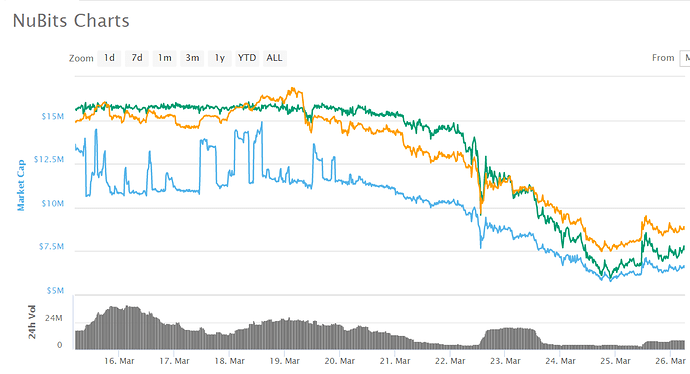Nu has run out of reserves to support the peg, and the market doesn’t have an appetite to support it.
So, Nu has failed for the second time.
The first time, was likely down to poor choices by a team of people charged with handling liquidity operations, who devalued NBT while there was still a fair amount of scope to sell NSR to support the peg. It’s not certain that a different course of action would have prevented that failure, but it would have at least delayed it & fully stress tested the system.
Despite the failure last time, the system’s other weaknesses have not been tackled.
This time, he mistake was not reforming Nu & strengthening it during good times.
Huge resources were available during the 2017 boom, but reserves were kept far too low, no initiatives were put in place to ensure ongoing demand for NBT / NSR when the good times ended, and Phoenix was paid huge amounts of money (recently seeking $285 per hour, plus bonuses), some of which were justified for recovering from the previous crisis, but in my view too steep considering the lack of further reform and vision.
The dependence on NBT parking is not a good place to be due to the small audience who might take advantage of it, and the huge issue that it’s trying to prop up demand in a way that increases supply in the medium term, adding to future downward price pressure.
A big problem is that NSR was de-listed from exchanges with good volume, which has crippled Nu to a large degree because it relies on NSR sales to hold the peg. If there’s no big market and audience for NSR, Nu is greatly disadvantaged. Hence Jooize’s recent posts saying that getting NSR listed on high volume exchanges is a top priority, which it should be, but the recent crisis may make getting listed difficult.
I can’t predict the future, but last time this happened, Nu did recover.
I hope that it does again, and that once stabilised, some serious thinking is put into strengthening the model beyond just getting NSR listed on exchanges.
Nu’s stability mechanism is a working platform that could enable some great things, if the model ensured ongoing demand for NBT and NSR, as well as being profitable in the good times and the bad.
